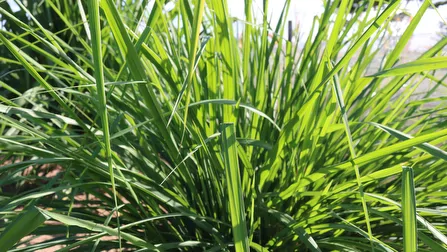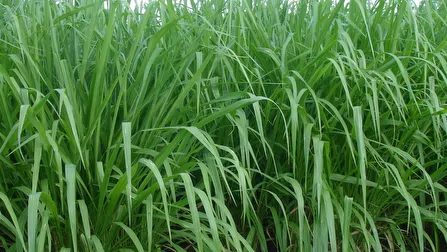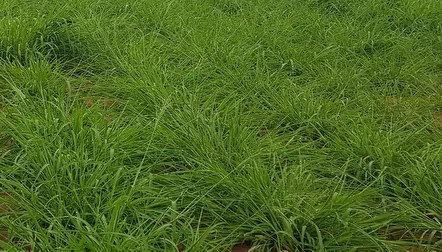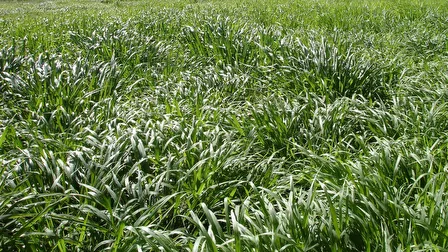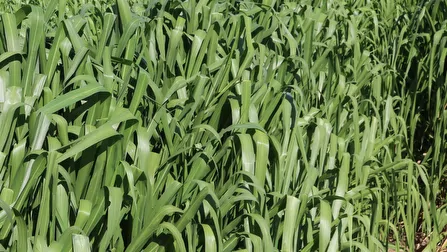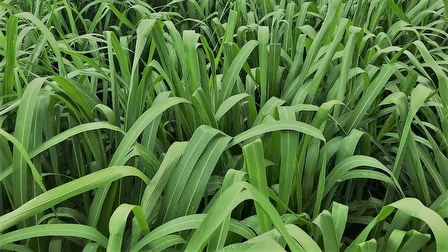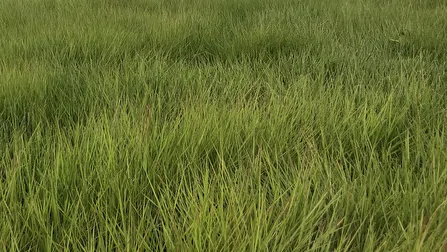
Indicação
Indicada para solos de média a baixa fertilidade e em áreas com encharcamento ou má-drenagem (Pantanal). A semeadura desta forrageira deve ser realizada no solo seco. Recomendado para bovinos de cria e recria. Pode ser consumida por equinos e ovinos, porém é obrigatória a suplementação destes animais com mineral adequado, devido à presença de oxalatos.
Urochloa humidicola
Brachiaria humidicola
Para solos de baixa fertilidade, tolera acidez, solos arenosos e inclusive solos alagados
Pastejo direto ou fenação
8 a 10 t/ha/ano de matéria seca (M.S.)
3 a 6%
Até 1,00m
Média a baixa
Média a baixa
Alta
Tolerante
Média
Perene
Origem
Cresce de forma nativa na África Equatorial, foi introduzida na Austrália com o no CPI 16707 em 1952, proveniente da Estação Experimental Rietondale, em Petroria – África do Sul. Depois foi levado para Nova Guné, Fiji até chegar ao continente americano.
Características Agronômicas
Esta forrageira é hospedeira de cigarrinha-das-pastagens (Notozulia entreliana e Deois flavopicta) mas tolera seus ataques, pode ser semeada em áreas com problema de drenagem e alagamento. Pouco exigente em fertilidade de solo. As suas sementes apresentam alta porcentagem de dormência, o aquecimento auxilia na sua germinação.
Utilização e Manejo
A humídicola é uma variedade indicada para solos de média a baixa fertilidade e em locais com excesso de umidade, bem característicos da região do Pantanal. A suas sementes possuem um nível elevado de dormência. Portanto, a sua formação é mais lenta, onde é bem comum algumas sementes germinarem após 6 meses da sua semeadura. O crescimento inicial lento desta gramínea, após a germinação, exige um manejo cuidadoso nos primeiros pastejo para assegurar o estabelecimento da pastagem. O primeiro pastejo deve ser efetuado de forma suave para estimular o perfilhamento e o enraizamento dos estolões. A humidícola perde a qualidade nutricional, mais rapidamente que outras braquiárias, quando manejada com maiores intervalos de utilização (pasto maduro, passado). Este pasto deve ser utilizado com altas cargas animais ou com maior frequência, permitindo assim a melhoria da qualidade do alimento disponível, porém com menor produtividade de forragem, uma vez que o pasto não recupera totalmente. Nas pastagens de humidícola ocorre uma baixa taxa de mineralização do nitrogênio. Em solos deficientes de matéria orgânica e de baixa fertilidade, a pastagem apresenta baixo conteúdo de proteína, principalmente na época seca do ano, fato que limita o consumo e os rendimentos animais. De modo geral a humidícola suporta cargas animais altas. A altura de entrada na pastagem deve ser de 20 a 30 cm e a saída com 10 cm. Recomendado para bovinos de cria e recria, pode ser também consumida por equinos e ovinos desde que seja feita uma suplementação adequada a espécie. A presença de oxalato nas pastagem, quando não bem mineralizada, pode ocasionar a Osteodistrofia Fibrosa (cara inchada) nos equinos.
Características Morfológicas
Gramínea perene, estolonífera, de hábito de crescimento semiereto a prostrado, os entrenós superiores medem de 8 a 10 cm de comprimento e os inferiores de 2 a 3 cm, são glabros e de cor verde claro. As nervuras das folhas carecem de pilosidade. Os estolões são fortes, longos, de cor púrpura e enraízam com facilidade. As folhas são lineares, lanceoladas, semicoreáceas, com o ápice acuminado. As folhas dos talos têm de 10 a 30 cm de comprimento e de 0,5 a 1,0 cm de largura. As folhas dos estolões têm 2,5 a 12 cm de comprimento e de 0,8 a 1,2 cm de largura. A inflorescência é terminal, racemosa, com 1 a 4 racemos de 3 a 5 cm de comprimento. As espiguetas são unisseriadas, bifloras, alternadas ao largo da raque com pedicelos curtos e medem de 5 a 6 mm de comprimento. Tem crescimento estolonífero, com grande número de gemas rente ao solo, o que explica sua tolerância a manejo baixo e intenso, suportando altas cargas animais, apresenta cobertura densa, é agressiva e de difícil consorciação com leguminosas. Recomendamos neste caso o Arachis pintoi, a Java e a Puerária.
